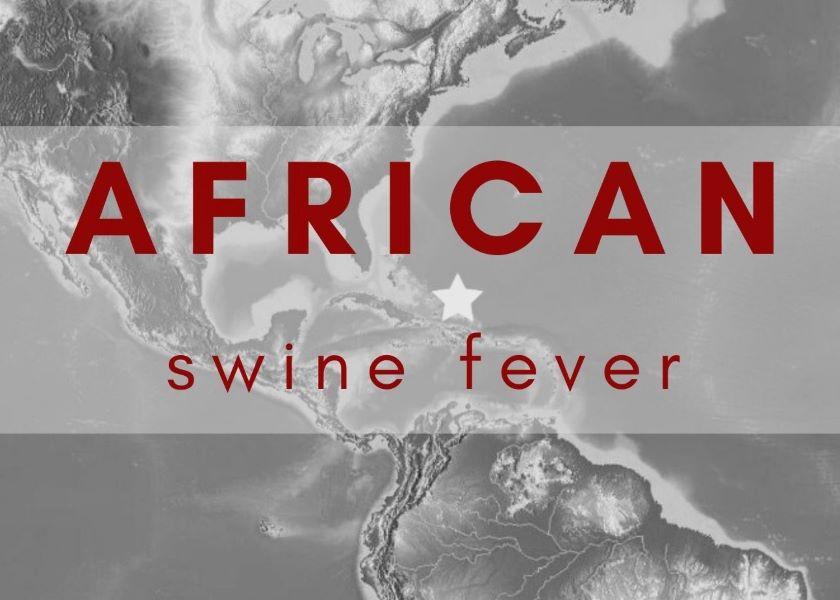Sundberg: Ramping Up African Swine Fever Preparedness and Prevention

U.S. producers have seen the devastating impact of African swine fever (ASF) in other countries. The ultimate goal is to keep it out of this country, so industry groups are ramping up preparedness and prevention protocols.
“The first objective is to make sure we do everything we can do to close a window so the virus doesn’t get into North America,” said Paul Sundberg, DVM, executive director at the Swine Health Information Center (SHIC).
In conjunction with the National Pork Board, SHIC carried out a comprehensive biosecurity review of the US pork industry, Sundberg told Pig Health Today. The review covered imports, pig movement and marketing systems to identify potential biosecurity gaps.
The National Pork Producers Council has worked with the government to successfully increase the number of canine teams at airports through the Customs and Border Protection division, Sundberg said. The teams identify contraband meat products, which could be contaminated with diseases like ASF.
National Swine Disease Council
The National Swine Disease Council was another initiative created to prepare for and improve swine health programs, Sundberg said. It was first designed to react to non-program domestic diseases like porcine epidemic diarrhea (PED) virus or porcine reproductive and respiratory syndrome, but it also provided an opportunity to talk about preparedness for ASF.
“It was formed along the model of the Pseudorabies Control Board when we had a pseudorabies eradication program,” he said. “That was an opportunity for state, federal and industry folks to sit down together and make decisions about how to go forward with our health programs. We learned from PED that we need to be more communicative and more collaborative in addressing and reacting to diseases.
“We have a lot of smart folks around the table,” Sundberg added. “With state/federal/industry cooperation we can make sure we’re doing everything we can do to prevent, prepare and, especially [if the case arises], respond to ASF or emerging disease outbreaks.”
Industry involvement is critical to the process. Pork producers know how pork production happens, and veterinarians know how to care for animals, Sundberg said. While state and federal partnerships are important, industry leadership and input provide a real-world perspective with practical information.
“It might look different behind a desk than it does when you’re out on a farm,” he said.
Research findings
In 2019, SHIC received funding from the U.S. Foreign Agricultural Service to study ASF in Vietnam under field conditions. The purpose was to learn lessons about ASF before it might come to North America.
“With the PED outbreak, we had to do research really quickly to figure out how to control and how to manage it,” Sundberg said. “With the help of this grant, we’re doing real-time research in Vietnam as the ASF outbreak happens. If it gets here, we’ll be better prepared to respond to it.”
The research has looked at baking time for trailers, Sundberg explained.
“Five minutes at 145° has been effective in neutralizing ASF,” he said. “That’s a good thing because in our U.S. facilities, we bake trailers at 145° to 160°.
“We’re looking in the future at pen-side tests and the use of enzyme-linked immunosorbent assay tests to detect pathways of entry onto the farm,” he continued. “We want to make sure that if we get ASF [in the US], we have all the tools in our toolbox and can respond very quickly so we don’t have to scramble to do that kind of research after the outbreak.”
Final thoughts
It’s important to point out that ASF is not a human-health issue, Sundberg stressed, but because the disease is lethal to pigs, it’s imperative to make every effort to keep it out of the country.
When asked how the virus might sneak into North America, Sundberg said the most likely transmission would be from meat products, in his opinion.
“ASF does not infect people,” he pointed out. “It’s only a disease of pigs. But pigs that come into contact with meat products from pigs that have had ASF will get it. We’ve seen that over and over in Europe, Russia, China and Southeast Asia. We have to be really careful about the illegal importation of meat. USDA and Customs and Border Protection regulate that, but sometimes things slip through so that’s an important thing to pay attention to.”
If ASF gets through the border walls, it won’t cause infection if it doesn’t infect pigs, so on-farm biosecurity is absolutely critical, Sundberg pointed out.
“It all comes down to local action and the producer being able to talk with their veterinarian about biosecurity protocols,” he said. “And it’s not just general biosecurity ⸺ it’s thinking about where your feed comes from and where your feed components come from. Do your service people or your workers have contacts with people from other countries? The producer is the last brick in the wall for national biosecurity, and that’s really key to prevention.”
More coverage from Farm Journal's PORK:
Close All the Windows to Keep ASF Out
ASF in the Western Hemisphere: What’s Different 40 Years Later?
It's Time to Batten Down the Hatches, Pork Industry Experts Say
USDA Prepares to Establish Foreign Animal Disease Protection Zone







